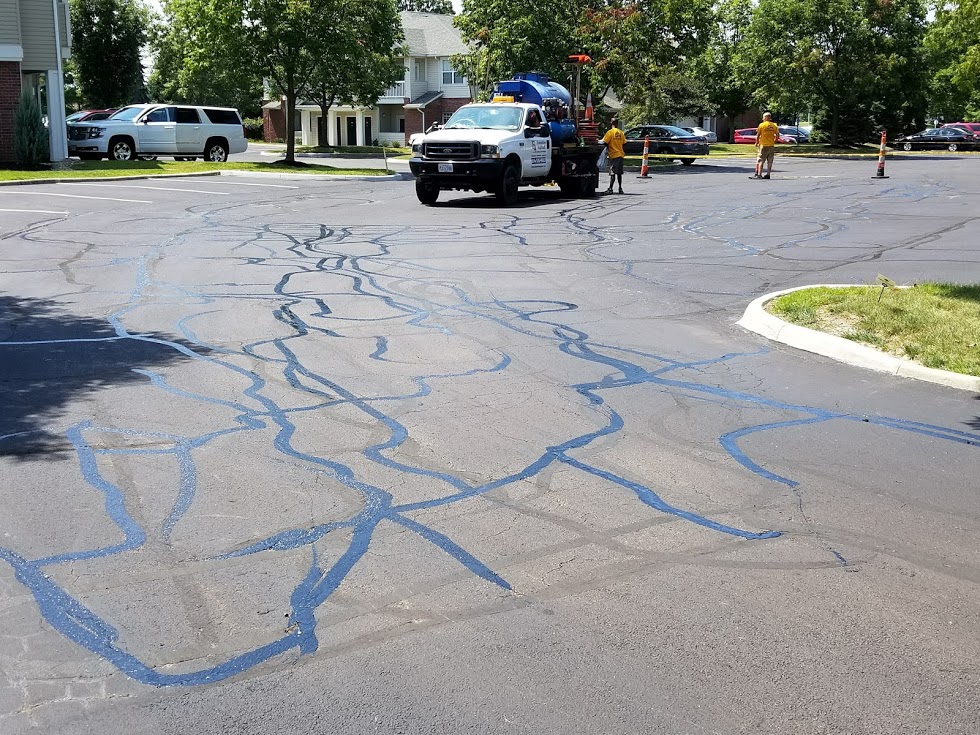CRACK SEALING
Crack sealing is perhaps the most important step in any pavement maintenance program. It is one of the most cost-effective techniques available when it comes to prolonging the life of your asphalt pavement. Cracks can be a result of various factors including freeze/thaw cycles, differential settlement, chemical spills, etc. Once cracks form they allow water into the foundation of your parking lot. Many foundations are made of limestone which washes away easily when introduced to water. Once the foundation erodes away the pavement loses the support it needs to perform properly.
One of the most effective and most frequently used methods is Hot Rubberized Crack Sealing. This process requires specialized equipment that heats the rubberized material to 375° F and allows the material to be applied to the crack. When properly applied hot rubberized crack sealer will last 3 to 5 years. Other cold applied materials typically fail after one winter. Once applied, hot rubberized crack sealers will leave an approximately 3-inch wide band over the crack. It is also important to note that once treated cracks will remain sealed 3 to 5 years, however, this service will not prevent more cracks from appearing in other areas.
Routine maintenance can prevent extensive damage. Crack sealing is designed to keep water out of the base layers of the asphalt where it is most likely to cause the most damage. Since crack sealing is a preventative maintenance measure, the type of crack is the main determining factor when determining if crack sealing is an option. Generally, cracks can be sealed, however, “alligator” or “spider-web” cracks are generally caused by foundation failure and crack sealing may not be the best long-term solution for those areas.






